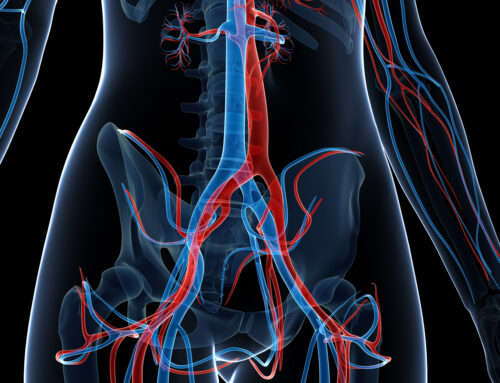
Recent interest in hormone replacement treatment for men is at an all time high level. There is great interest in both the benefits and the potential risks of this beneficial therapy. Our practice specializes in individual treatment and optimization of your hormone levels with minimal risk of treatment. Let’s review the potential benefits of optimal testosterone hormone levels. For men this is the primary sex hormone and therefore extremely important for optimal health and wellness. We can help you with a number of different treatment options that range from topically applied medication to self-injected shots to an easy office procedure that implants the testosterone and lasts about 4 months.

improvement in libido and sexual function
bone density
muscle mass
body composition
mood
increased number of red blood cells
cognition
quality of life
cardiovascular disease reduction
However, some controversy has arisen regarding testosterone therapy and many of my patients have expressed some concern. We are monitoring the investigation of these issues but for now our position is as follows:
Recent headlines in the news regarding new studies in the Journal of the American Medical Association, November 2013, and a January 2014 article in the journal Plos On that discuss the association of testosterone therapy with the risks of death, heart attack and stroke in men with low testosterone levels have caught the attention of many physicians and patients. There are multiple problems with these current studies that must be considered before men get scared off testosterone therapy and miss out on the numerous potential health benefits of proper testosterone replacement therapy. These current studies miss so many important facets of testosterone replacement therapy that the results are certainly questionable.
Neither study assessed testosterone levels of patients before and during therapy. There are other critical blood tests that should be done that were not being done during the treatment of the VA men or in the current study, including blood counts and estrogen levels. Higher red blood cell counts and higher estrogen levels are known issues that may occur in men given testosterone therapy. Without assessment of testosterone levels, red blood cell counts and estrogen levels prior to and during therapy, it is impossible to tell if a patient is a proper candidate for therapy and if they are tolerating the therapy well.
Multiple prior studies have shown that testosterone therapy may protect against heart disease and decrease mortality. In a study published in June 2012 in the Journal of Clinical Endocrinology and Metabolism that also examined veterans, the authors concluded that testosterone treatment resulted in a 39 percent decreased mortality risk vs. men not treated with testosterone. Importantly, many studies have shown that men with lower testosterone levels are at a higher risk of mortality. A 2007 study also in the Journal of Clinical Endocrinology and Metabolism studied 794 men aged 50-91 years old for over 11 years and showed that men with testosterone levels in the lowest quartile were 40 percent more likely to die than those with higher levels. In this study, low testosterone also predicted increased risk of cardiovascular disease.
So, the important question here is why testosterone therapy was associated with increased risks in these new studies when lower testosterone levels are clearly associated with increased risks of death and disease whereas higher levels of testosterone are associated with protection against cardiovascular disease and mortality. There are multiple reasons for this outcome. In the November 2013 study, the authors mention that only 60 percent of the patients had an additional testosterone level checked after starting treatment. Without follow up testing it would be impossible to know if therapeutic increases in testosterone were achieved with the testosterone treatment. The men who did have follow up testing did not have optimal increases in their levels of testosterone.
There are several risk factors of testosterone replacement therapy that were not addressed in this study and do not tend to be addressed by all doctors who prescribe testosterone hormone therapy. Testosterone therapy may cause increased concentration of red blood cells (erythrocytosis). A study published in the journal Therapeutics and Clinical Risk Management regarding risks and benefits of testosterone replacement therapy states that elevations in hemoglobin (concentration of red blood cells) may have bad outcomes because the blood can become thick, which could exacerbate vascular disease. The study authors state that the treatment for this increase in concentration of red blood cells is either dose adjustment of the testosterone and/or periodic phlebotomy (drawing off blood as in blood or blood donation). This monitoring wasn’t done in the JAMA study.
There are other levels that must be followed when one is placed on testosterone therapy. One of the most important is estradiol (estrogen). Testosterone is known to convert to estrogen readily in men through a process called aromatization. A study in the Journal of Clinical Endocrinology and Metabolism in 2009 showed that testosterone treated men readily convert testosterone to estrogen in a dose dependent manner which means the higher the dose of testosterone, the higher the level of estrogen. A study in the Journal of the American Medical Association also in 2009 showed that men with heart disease with both low levels of estrogen and high levels of estrogen had increased mortality. Since estrogen levels were not assessed in the men in the current JAMA study, it is impossible to know whether subjects had high or low estrogen levels. The prior research states that estrogen levels must be kept in a middle range for optimal survival. Studies show that optimal estrogen levels also protect men from osteoporosis and protect their cognitive function as well. For testosterone therapy to produce optimal results, levels of estrogens must be assessed on an ongoing basis to assure that levels are not too high, which may increase risk of cardiovascular disease and mortality and cause other issues like gynecomastia, the development of increased male breast tissue.
Testosterone converts to another hormone known as dihydrotestosterone (DHT). DHT was also studied in the previously mentioned Journal of Clinical Endocrinology and Metabolism study. The more testosterone a man receives, the more his DHT level will rise. Researchers in 2004 published in the journal Endocrinology that the hormone DHT enhances some of the early stages in atherosclerosis. With testosterone therapy it is possible for excess levels of DHT to be produced. Again, in this study, men given testosterone therapy were not monitored for high DHT levels which may have put them at additional, unnecessary risk for cardiovascular disease. High DHT levels can also be associated with symptoms of benign prostatic hypertrophy (benign growth of the prostate) and male pattern baldness as well.
Additional concerns arise with the quality of the results of this newest study (Plos On January 2014). The most glaring has been totally ignored by the authors. They compared the groups of men started on testosterone therapy to men who were started on PDE5 inhibitors and found a lower risk of heart disease in the PDE5 inhibitor group. PDE5 inhibitors are drugs used to treat men with erectile dysfunction — Viagra and others are in this class. The authors state they used this group so there would theoretically be an increase in sexual activity in both groups. They ignored one very important point, though. PDE5 inhibitors work in many tissues throughout the body, including having significant positive effects on the cardiovascular system. Two of the PDE5 inhibitors have recently been approved for treatment of idiopathic pulmonary hypertension because of the ability of PDE5 inhibitors to relax blood vessels. A new study out in January 2014, in the Journal of Cardiovascular Pharmacology and Therapeutics states that PDE5 inhibitors have potential as cardiovascular drugs in patients with coronary artery disease and even possible improvement in heart failure patients. With the data that PDE5 inhibitors, through their effect on nitric oxide levels, can decrease the risk of heart disease and help to relax blood vessels in men with heart disease, how can the authors of the testosterone therapy study possibly think that men on PDE5 inhibitors would be a good control group against the men placed on testosterone therapy?
The results of the Plos One study run counter to a large body of literature of the last 20 years that supports testosterone treatment as an important therapy that can improve cholesterol levels, decrease blood sugar levels, reduce body fat and increase lean muscle mass, all factors that would reduce the risk of heart disease. A new review article was published in December 2013 in the Journal of the American Heart Association with the goal of providing a comprehensive review of the clinical literature that has examined the associations between testosterone and cardiovascular disease. Well over 100 studies were reviewed, and the authors concluded that low levels of testosterone are associated with higher rates of mortality and cardiovascular- related mortality, higher rates of obesity and diabetes. Additionally, the severity of disease correlated with the degree of testosterone deficiency. Testosterone therapy has been shown to relax coronary arteries and improve ability of patients with congestive heart failure to exercise. Testosterone therapy has been shown to lower blood sugar in diabetics and to lower body mass index in obese patients. Finally, studies have associated lower testosterone levels with thicker walls of some of the major blood vessels. This thickening increases the risk of atherosclerosis thus leading researchers to conclude that low levels of testosterone increase the risk for atherosclerosis. All of these factors point to the conclusion that optimal testosterone levels decrease the risk of cardiovascular disease.
These recent studies that suggest increased cardiovascular risk have prompted some to ask for warnings on testosterone therapy and to educate their patients on possible increased risks of heart disease. Doctors are the ones who need more education here. Physicians should be educated on the possible issues they may encounter with patients on testosterone therapy, including higher levels of red blood cells and elevated levels of estrogen. Physicians should monitor their patients’ blood cell counts and estrogen levels on testosterone therapy to assess for these risk factors for cardiovascular disease. If a patient has a high red blood cell count, the dose of the testosterone can be decreased or the patient can be sent for blood donation to reduce the high red blood cell count and thus any increased risks of clots or heart attacks. Additionally, high estrogen levels may increase the risk of heart attack and stroke. There are medications that can be prescribed to control high estrogen levels and keep estrogen in the proper, low risk range. These precautions need to be used when prescribing testosterone therapy and studies need to be done reflecting results of testosterone use when these precautions are followed.
Testosterone therapy when managed properly can improve low testosterone levels, which is associated with a lower risk of cardiovascular disease and a lower mortality risk. The results of the current studies, despite all the news media coverage, are questionable and perhaps meaningless. Testosterone therapy can be an excellent way to help men to enhance their quality of life and decrease their risk of multiple diseases, as shown in many studies. Importantly though, the therapy should not be undertaken lightly and should be properly monitored by a hormone specialist that is well versed in the risks of therapy and the treatment of possible side effects for patients to have optimal benefits from the therapy.




